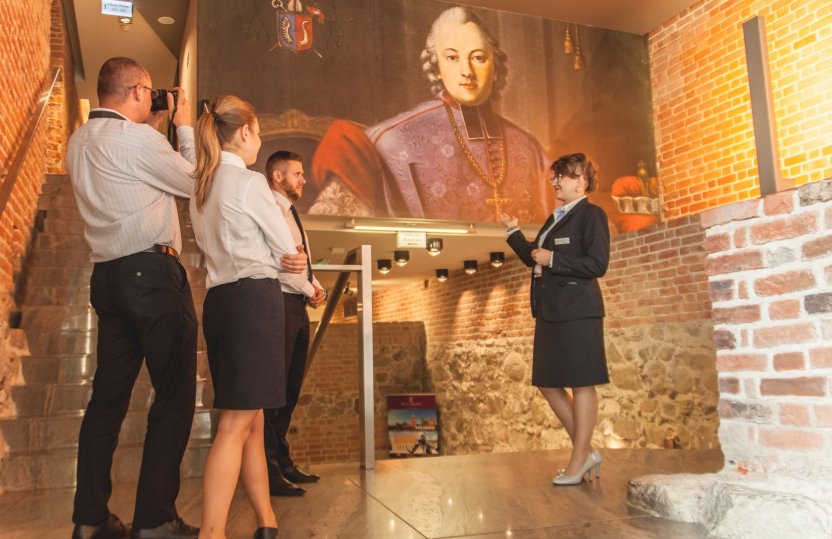



The Warmian bishops had been residing here for almost four hundred fifty years – from 1350 until 1795. It used to be their main residence and centre of power. Here’s where the church jurisdiction in the diocese was governed from and where the Warmian dominion was managed. It was the law and the court centre. And most obviously, the residence of excellent Poles and their magnificent guests, e.g. Bishop Watzenrode and Nicolaus Copernicus, the humanist, poet and the first professional diplomat of Poland - Tiedeman Giese or top European counterreformation representative – Stanislaw Hozjusz.
Yet scholars were not the only residents of the bishops’ castle. Also ambitious politicians and statesmen paid frequent visits to these walls, enriching their public activity with taking care of the Lidzbark cultural life. For example: king Leszczyński, Sigismund III Vasa, John Sigismund, Elector of Brandenburg; emperor Paul I Romanov, Charles XVII or even Napoleon Bonaparte himself. The last Warmian bishop before the partition of Poland was the famous poet, prose and comedy writer Ignacy Krasicki.

The Southern outer ward has been adapted for the Krasicki Hotel****, whereas the Castle itself is now the Warmian Museum – as a division of the Olsztyn Museum of the Warmia and Masuria region. Our guests can admire many precious treasures of the legacy “this land of culture and science has left for us”. We try to do our utmost to follow the traces left by the centuries of the support given to the world of culture and science in the region. The Krasicki Hotel is an active patron of art and learning, yet constituting a good base for business and rest at the same time.

On the eastern side of the Lidzbark Warmiński, city on the edge of the courtyard at the Krasicki Hotel, among tree lined morainal hills there is one of the most precious monuments of the medieval times – the castle of the Warmian bishops built at the turn of the 14th and 15th century. The defensive location on the narrow strip of land entwined with two rivers, where Symsarna falls into the river Łyna confirms the character of the place. In the arms of a grand moat, in the vicinity of the castle out wards with the mill, sawmill and copper smithy as well as the administration – housing part of the castle complex, this place enraptures you with its magnificence. The majestic castle form with a tall tower and corner turrets, Gothic cloisters of the courtyard and mostly colourful polychrome lintel interiors turn the castle into the Wawel of the North.


